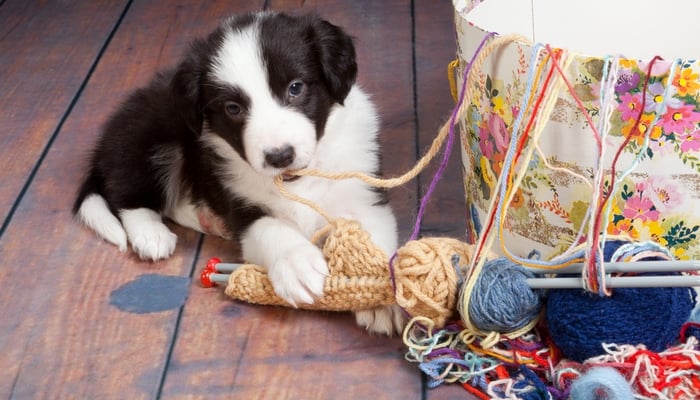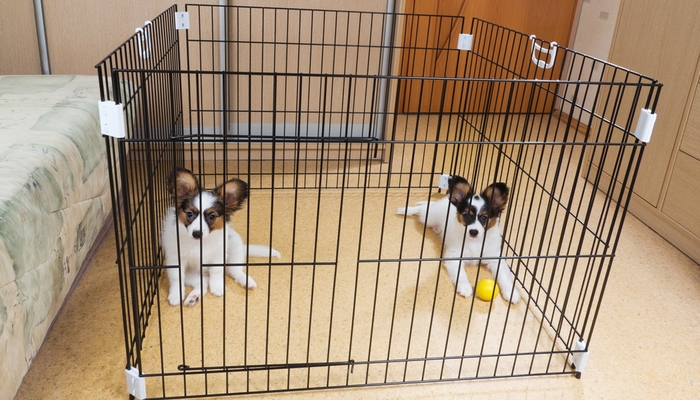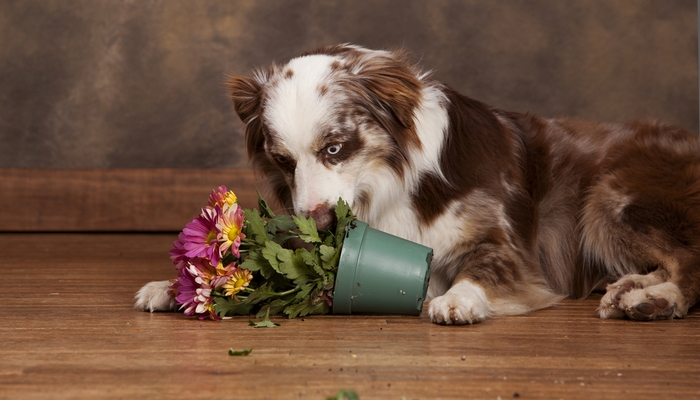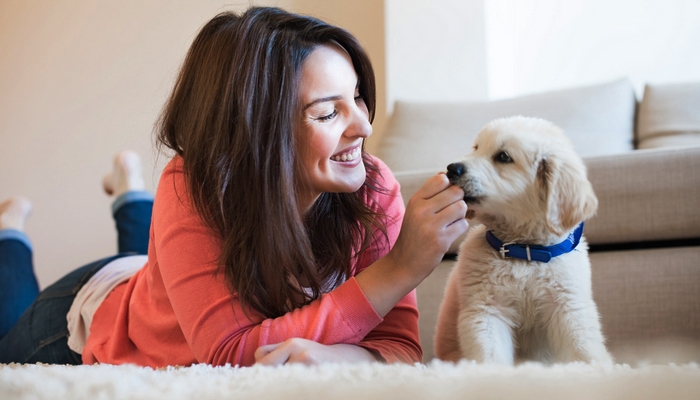Learning how to puppy proof your home is essential before or right after you adopt a puppy and bring him into your house or apartment. The so-called “puppy proofing” means keeping your new dog safe and your own home in tact. Some of these tips on how to puppy proof your house I give you below and in my video above may sound like common sense, but some pet parents 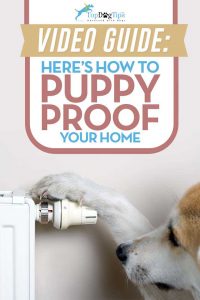 forget about them; other tips will certainly surprise you.
forget about them; other tips will certainly surprise you.
Just like young children, puppies learn about their world by exploring. They use their paws and their mouths to investigate their environment. Unfortunately, this can also get them into a lot of trouble.
A puppy's natural curiosity is a large part of what makes them so much fun, but it can also lead them into some very dangerous situations. It's your responsibility as pet owners to learn how to puppy proof your home in order to keep your pooch safe.
RELATED: How To Toilet Train A Puppy (Video)
How To Puppy Proof Your Home: A Step-By-Step Video Guide
1. Choose a puppy that fits your environment
Learning how to puppy proof your home starts before you even begin looking for your new canine companion. You need to think about your home – both inside and out.
Do you have plenty of space for a large breed dog, or is your home better suited for a small breed? Think about that size comparison for a moment. A bigger dog requires more than just a larger area.
You'll need to do a lot more puppy proofing for a larger dog. If you choose to adopt a small breed, you can place things on bookshelves, coffee tables and other places that are too high for your tiny pup to reach.
Large breed puppies grow quickly. You may be able to get away with this for the first couple of weeks, but as your dog gets bigger you're going to need to do a lot more puppy proofing.
For more tips and ideas on picking the right dog for your lifestyle and environment, listen to my 2nd podcast episode where I discuss this topic in more detail.
Basically, you'll need to keep things out of reach, which will likely mean moving them to a cupboard or closet. It will also be more difficult to contain a large breed puppy. Small breeds will have a hard time escaping a pet gate, but a large breed could jump right over one if you're not paying attention.
Do you have the time and patience to work with a large breed puppy? Can you afford the added expense? The bigger the dog, the more expensive the supplies will be to keep him safe. You'll need a bigger crate, playpen or pet gate to accommodate your growing buddy.
RECOMMENDED READ: 10 Tips for Picking Out the Best Extra Large Dog Crate
2. Create a small, safe puppy area
Your puppy is going to need a safe area to play when you're not able to keep a close eye on him. You could invest in a puppy play pen, like the one pictured above, or you could create a safe for him to wander freely in your home.
This safe area should be separate from your dog's crate, if you're going to be crate training him. The crate is a great training tool, but puppies need room to romp and play. A crate doesn't offer enough space.
If you're opting not to buy a play yard or playpen, then you need to close off a small area in your home for your dog to wander. I recommend keeping your puppy in a room without carpeting, as it will make cleaning up any accidents he has much easier.
You can either purchase a pet gate to secure your dog in one room, or puppy proof a few rooms and close the doors of any rooms that your dog is not allowed to enter. You'll just need to be 100% sure that all the other doors are closed when you're not able to supervise your pup.
When learning how to puppy proof your home, it's best to prevent your young puppy from having access to the bathroom or kitchen unless you are with him. There are countless hazards in these two rooms.
RECOMMENDED: 5 Best Puppy Play Pens & Baby Play Pens for Dogs
3. Remove potential dangers
The hardest part of learning how to puppy proof your home is removing all the potential dangers. You need to be sure that anything that could be harmful to your puppy is out of his reach.
Think of it like baby proofing a house in preparation for a toddler's visit.
In my video guide above I share some common things you'll need to be sure to do including:
- Removing or securing all electrical cords
- Removing or securing blinds or drapes, including the cords used to adjust them
- Ensure there are no heat sources available that your puppy could get close to
- Keep all cleaners and other chemicals, as well as medication, in a secure cupboard
- Remove all houseplants from the puppy's reach – many common houseplants are toxic to dogs including aloe vera, ivy, jade, sago palm and the asparagus fern
- Remove all small objects that could be choking hazards
- Ensure all garbage is out of the puppy's reach as it could contain items that will make the dog ill
Nervous to train your Fido alone because he's a chewer? Check out our video guide on How To Train A Dog To Stop Chewing.
4. Look at the environment through your dog's eyes
I know it sounds silly, but getting down on your dog's level is the best way to find any hazards that you may have missed. When learning how to puppy proof your home, thinking like a dog will really help!
As I explain in my video guide, you need to go through your home room by room. If your puppy is going to be allowed in a room, than you need to inspect it. Get down on your puppies level and look all around for hazards that you may have missed.
Look for wires, cords, small objects and anything else that may have slipped your mind. It's also a good idea to have someone that doesn't live in your home come in to help.
Ask a friend or family member to look around. In situations like this, sometimes you miss things simply because you are so used to seeing them every day. A fresh pair of eyes can really come in handy!
WATCH NEXT: Comparing Best Puppy Potty Training Pads for Effectiveness


